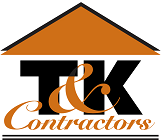There are many important factors to consider when making decisions about major purchases like a home remodeling project. Price is one that might be at the top of the list. It makes sense to avoid a price that seems unusually high, but well-informed homeowners also know that a price that is too low can signal problems and unexpected costs ahead for a remodeling project.
Think of Goldilocks before signing on the dotted line of a remodeling contract, especially one with a price tag that seems too good to be true.
What Makes an Estimate Too Low?

Lower Quality Products
Some homeowners mistakenly assume that all building products are created equal. And while one nail may be similar to another, that is not the case with many other building materials. As you would expect with anything you buy, better quality, longer-lasting structural materials, windows, doors, flooring, roofing, and cabinets cost more. So, a low estimate may be a sign lower quality and less durable materials will be used. When you get a remodeling estimate, make sure you understand EXACTLY the quality level of the building materials to be used. Remember, when you hear “builder grade” it is the minimal acceptable quality, not the best.
Poor Planning
A too-low price can mean a remodeler isn’t experienced in planning and estimating costs, and hasn’t based the estimate on a detailed, comprehensive work plan. If what you get is a “ballpark” price, don’t expect that’s what the final cost to be. Control of project costs, quality, and schedules requires solid upfront planning and conscientious project management. Cost overruns and headaches can happen when a job is plagued by poor planning or execution, and critical time can be lost.
Less Experienced Labor
In every industry, workers with the highest level of skill and experience command the highest salaries. The remodeling industry is no exception. If you receive an estimate that is surprisingly low, you should question the experience of the workers who are going to be doing the construction. Remember, you’ll be living in your newly remodeled home for many years, and frustration with poor craftsmanship outlasts the satisfaction of finding a low price.

Small Allowances
It’s a very common industry practice for a remodeler to provide a price that is based in part on “allowances.” These are placeholders in the budget that should cover the products that you’ll want, such as cabinets and fixtures, but have not yet selected. Allowances are a perfectly acceptable way to estimate… when the contractor allows a reasonable amount of money for those items. But to achieve a low estimate, some remodelers use allowances for only low-cost, very basic components. Then when you make your product selections, you’ll find a big difference between what was “allowed” in the estimate and what the product you want actually costs. This can drive up the actual final price tag over the estimate very quickly, and that’s what you’ll pay, not the allowance price.

Shortcuts
If you receive an estimate that is much lower than expected, investigate whether the contractor saves on expenses by not carrying proper insurance, licenses, workers compensation coverage, or does not get required building permits or inspections when needed. Reputable companies always take these requirements seriously, and consider insurance, licensing, and permits a fixed cost of doing business. If a contractor takes illegal shortcuts here, can you trust them to avoid shortcuts that will result in a lower quality, less durable project that will cost you more money down the road?
So, think about Goldilocks…
If an initial low estimate grabs your attention, stop and ask yourself (and the contractor) why it’s so low. At T&K Contractors, our ultimate goal will always be a smoothly run project that results in a high quality, beautifully remodeled home for you – completed at a fair price, on time, and on budget.
We’re confident that when you think about it, you will decide against making a very expensive mistake. We’re happy to answer any of your questions and give you references from satisfied clients. So, let’s talk!
